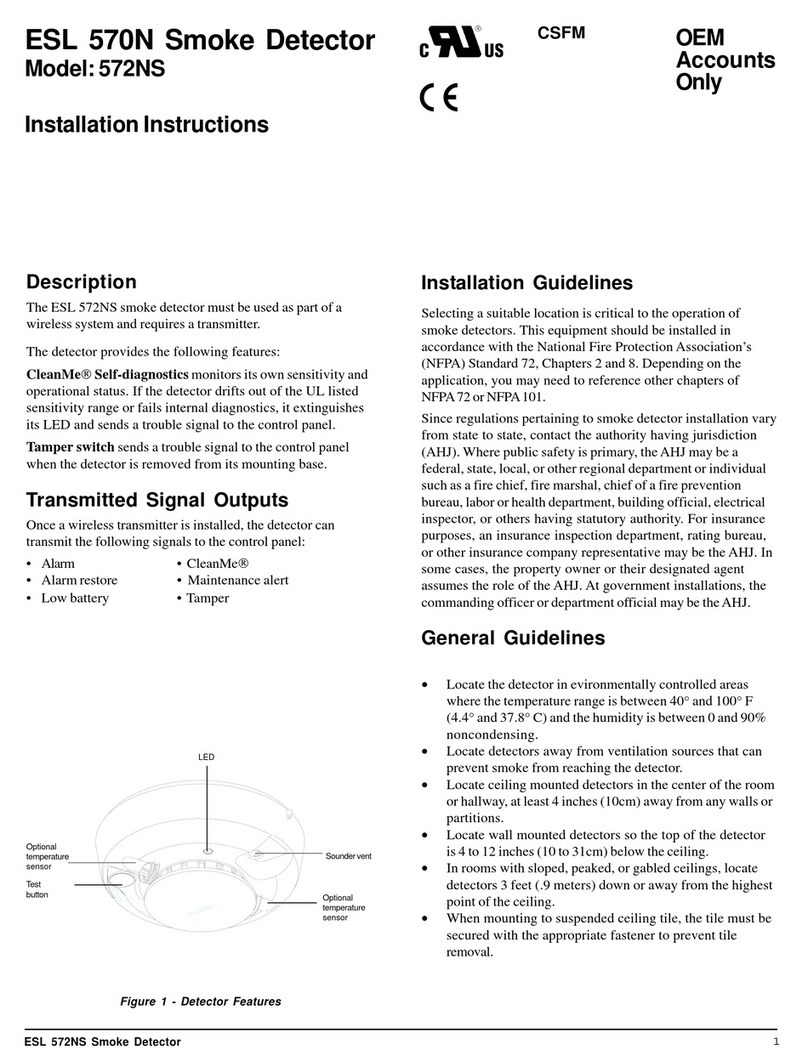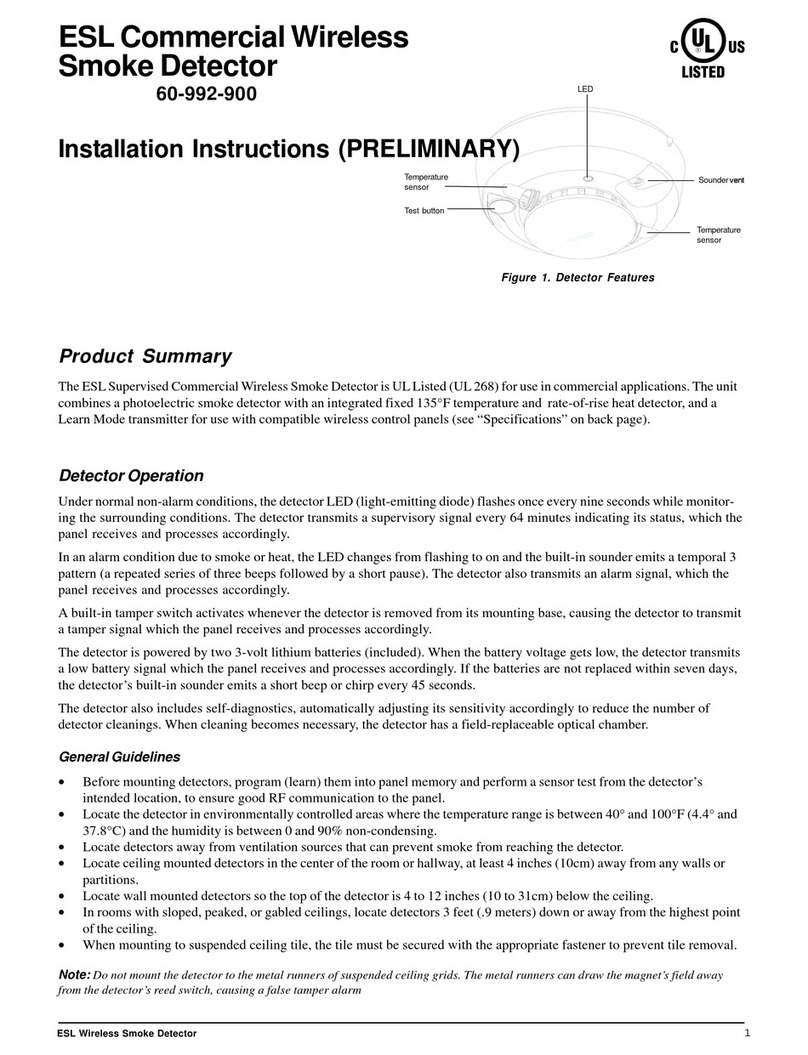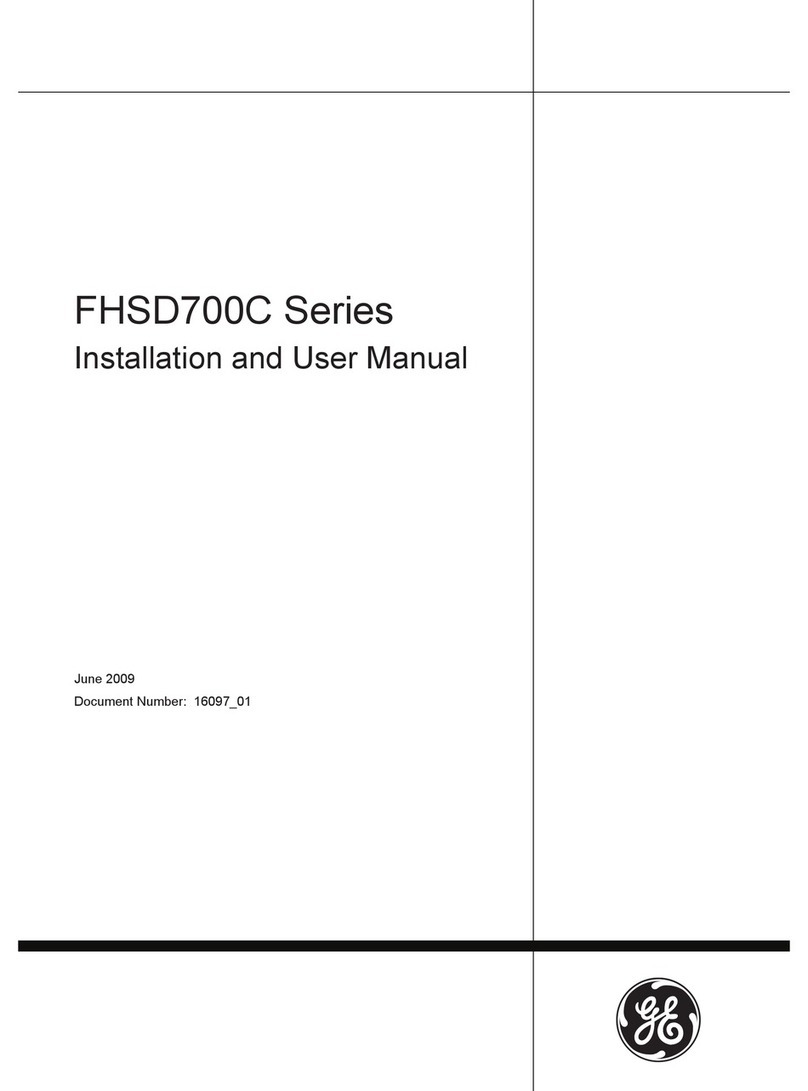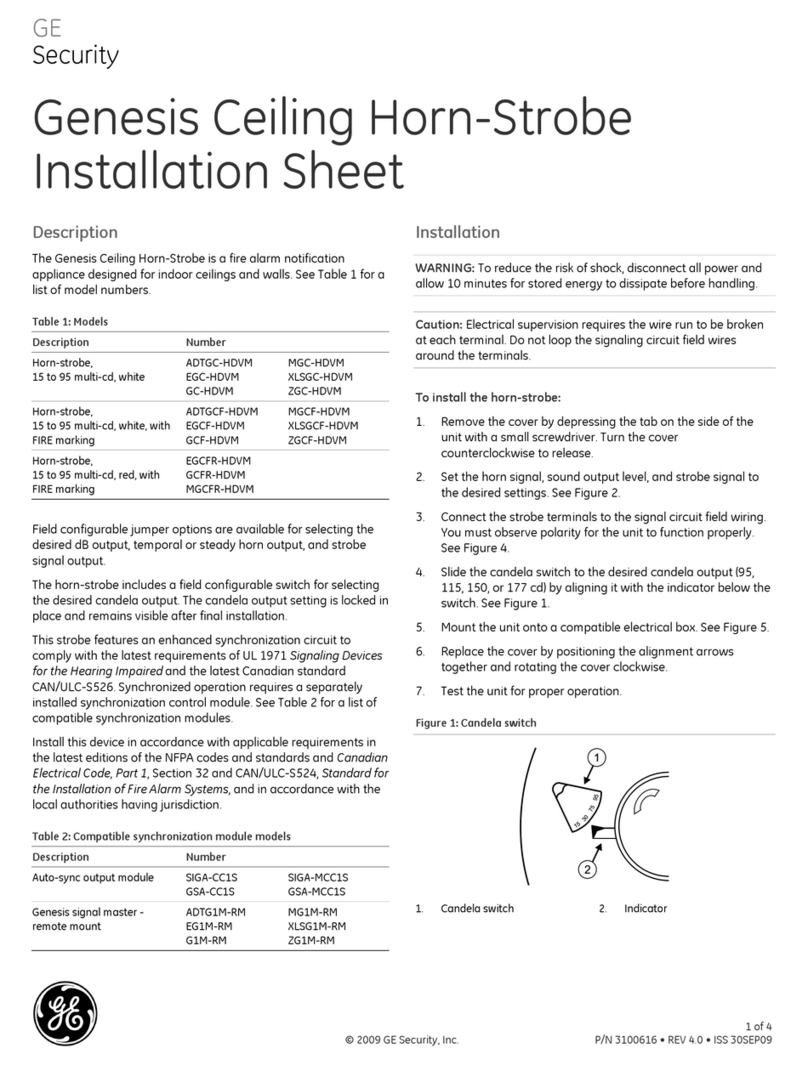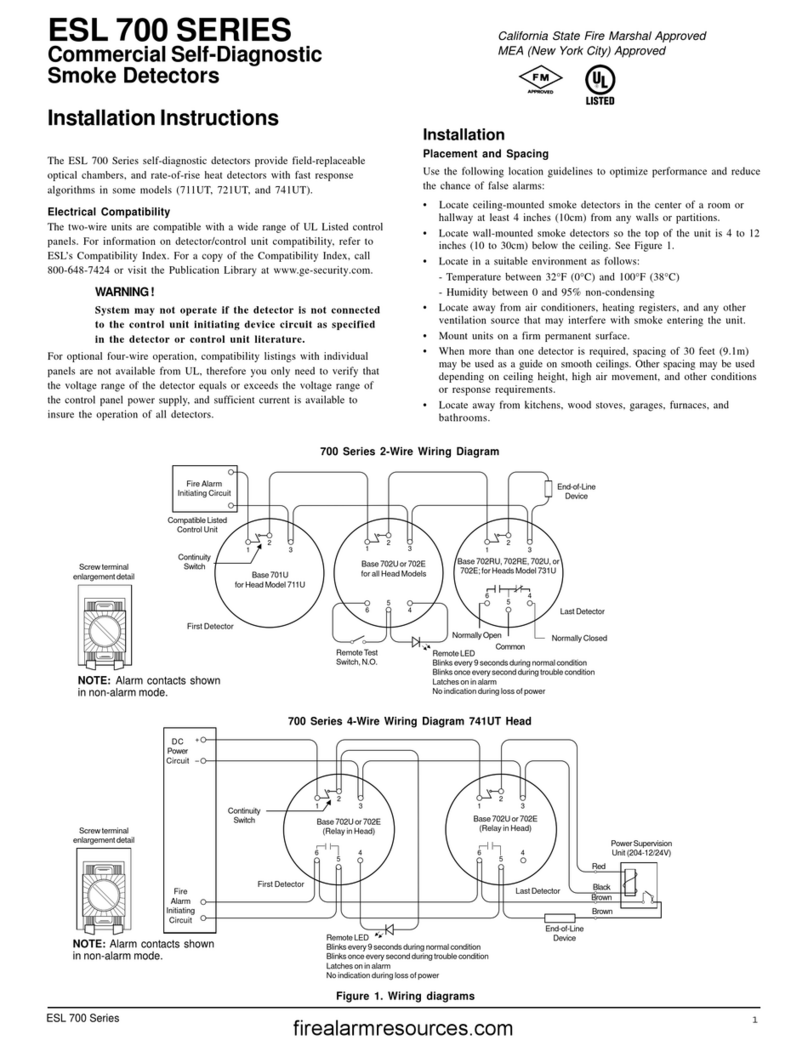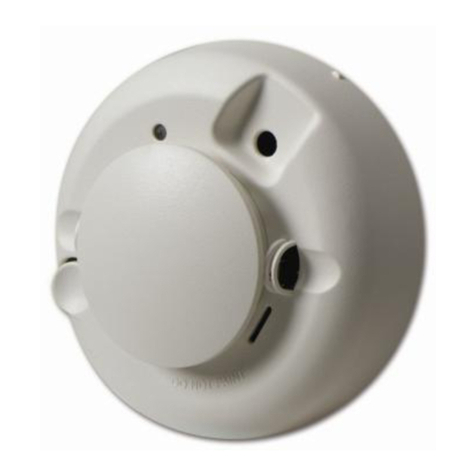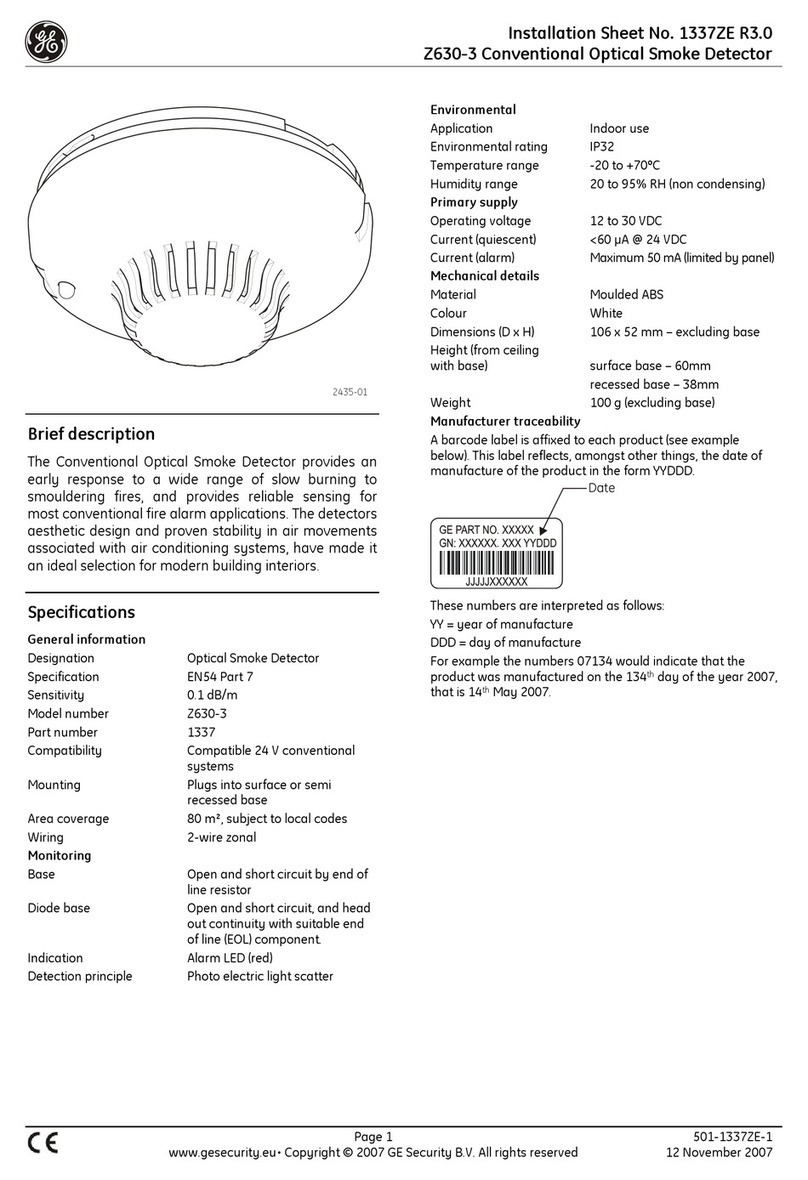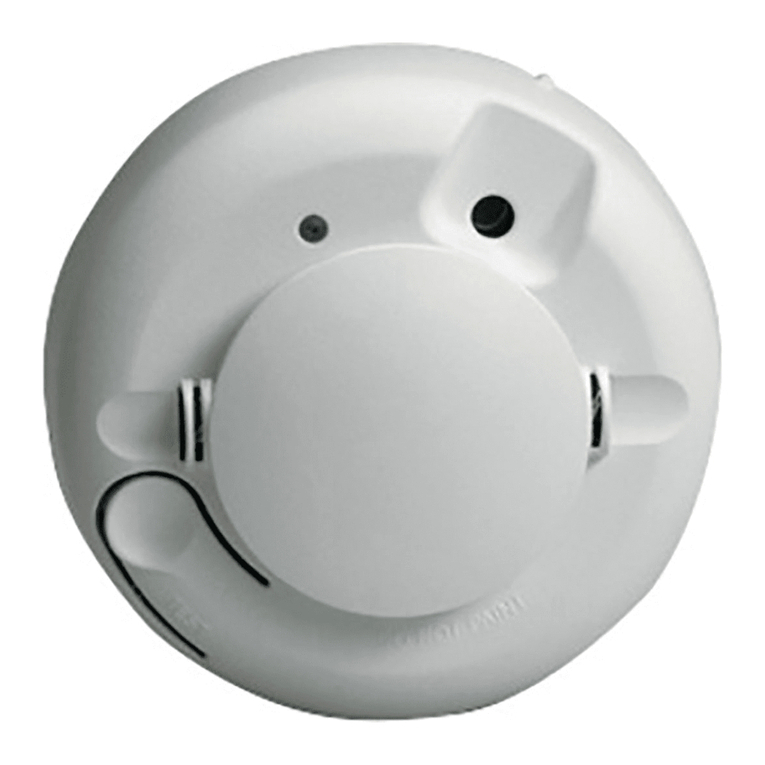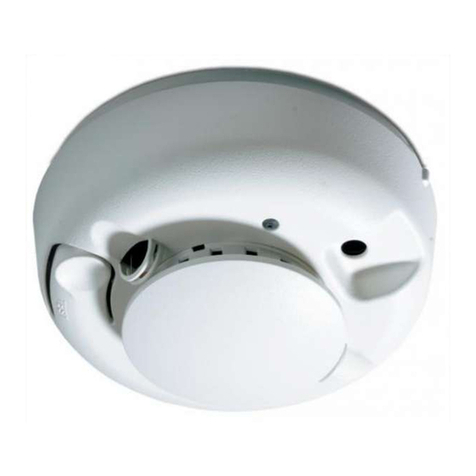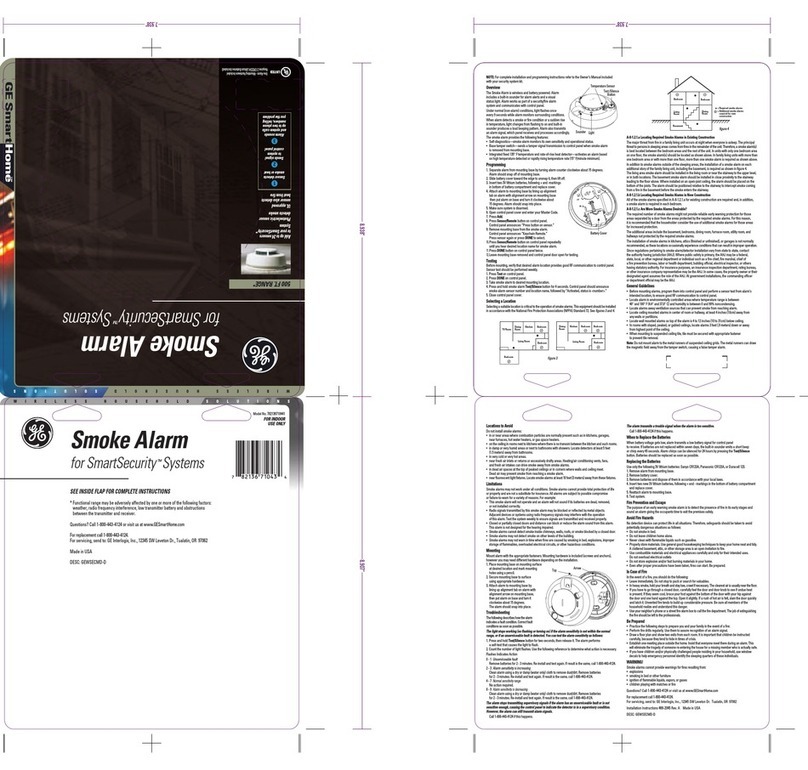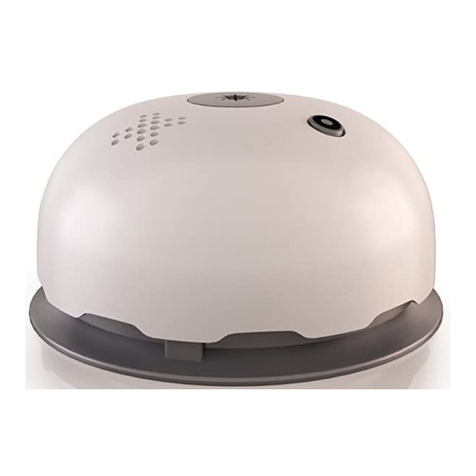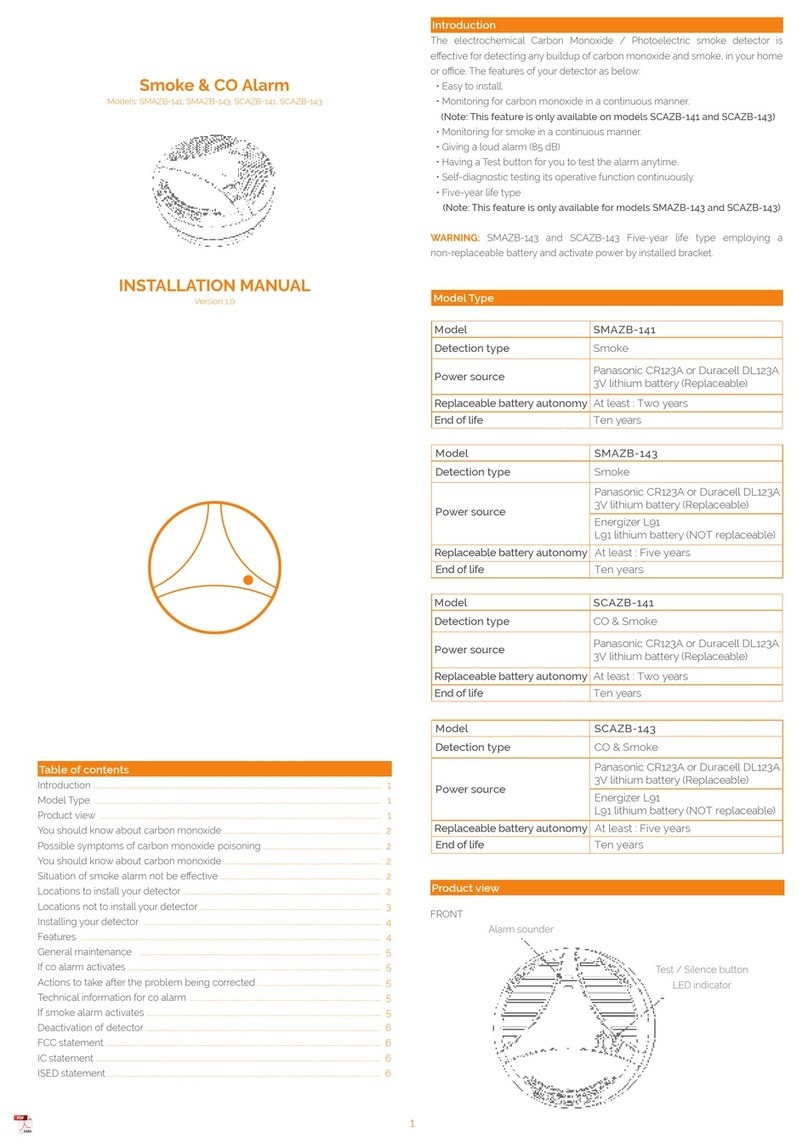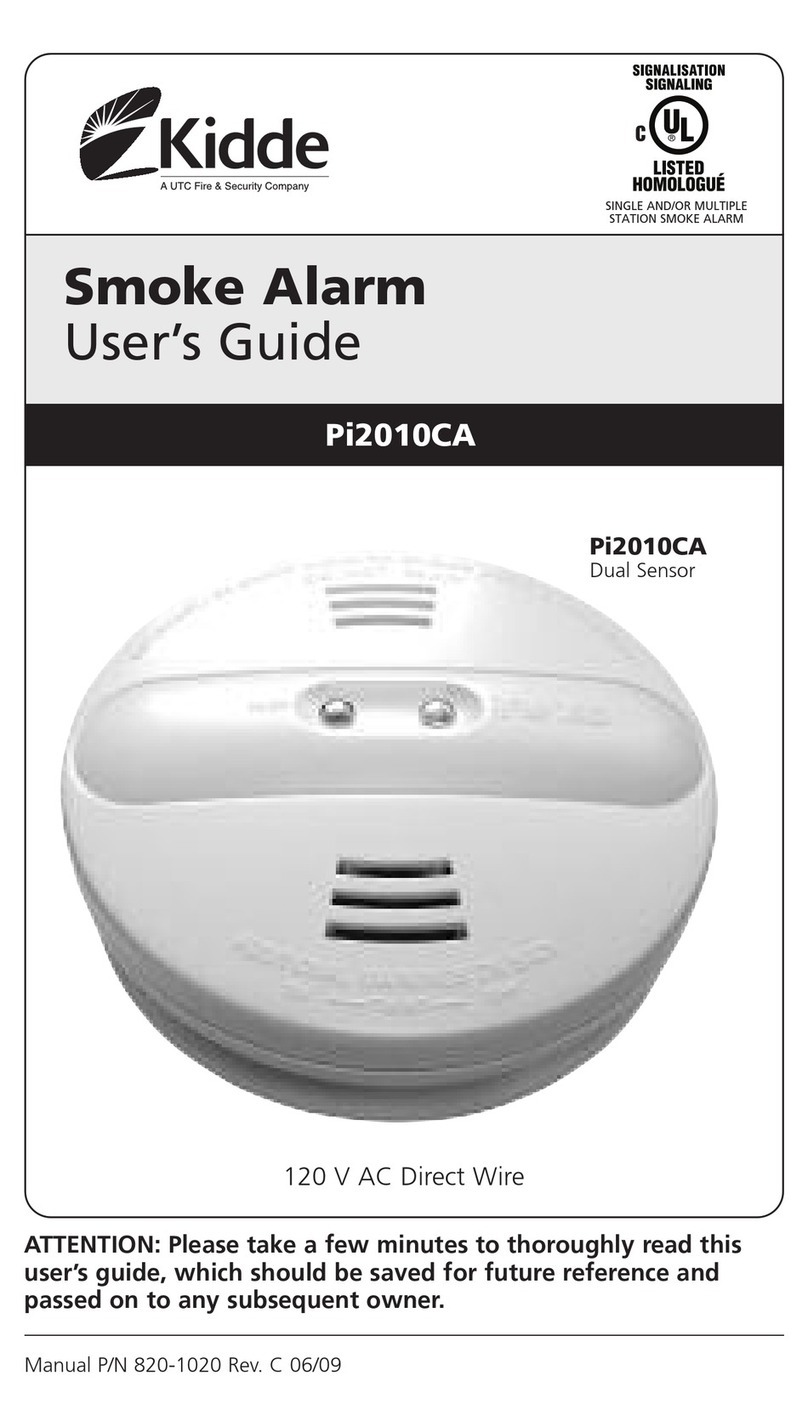
5
ESL 429/449
Warning! Limitations of Smoke
Detectors
Smoke detectors are very reliable, but may not work under all
conditions. No smoke detector provides total protection of life or
property. Smoke detectors are not a substitute for life insurance.
Unreliable transmission or receiving of radio frequency
(RF) signals may occur if the system is not installed,
located, serviced and repaired properly. RF signals sent by this
detector may be blocked or reflected by metal objects. Adjacent
devices or systems using radio frequency signals may interfere with
the operation of this alarm. Test the system often to be sure that
signals are being sent and received properly.
Smoke detectors may not be heard. A sound sleeper or
someone who has taken drugs or alcohol may not awaken if the
detector is installed outside a bedroom. Closed or partially closed
doors and distance can block sound. This detector is not designed
for the hearing impaired.
Smoke detectors may not always activate and provide
warning early enough. Smoke detectors only activate when
enough smoke reaches the detector. If a fire starts in a chimney,
wall, roof, on the other side of closed doors, or on a different level
of the property enough smoke may not reach the detector for it to
alarm.
Smoke detectors are a significant help in reducing loss,
injury and even death. However, no matter how good a
detection device is, nothing works perfectly under every
circumstance and we must warn you that you cannot expect
a smoke detector to ensure that you will never suffer any
damage or injury.
Limited Warranty
ESL is a brand of GE Security. The manufacturer warrants this
smoke detector to be free from defects in material and workman-
ship under conditions of normal use for a term of 3 years from the
date of manufacture.
During the warranty period, if a GE Security product or any of its
components becomes defective, it will be repaired or replaced
without charge.
Out-of-warranty units will be repaired at the discretion of the
manufacturer or, if not, a card will be forwarded to the customer
suggesting a replacement unit and the cost of that unit.
This warranty does not apply to units which have been subject to
abuse, misuse, negligence or accident, or to which any modifica-
tions, alterations or repairs have been made or attempted.
This warranty is extended only to the original purchaser of the
smoke detector and may be enforced only by such person. During
the warranty period, if the detector or any warranted components
thereof becomes defective, it will be replaced or repaired without
charge at the manufacturer’s discretion if returned in accordance
with the following instructions:
Obtain a Return Authorization Number by calling 1-800-648-7422
or 503-692-4052, then carefully pack the detector in a well padded
and insulated carton and return, postal charges prepaid to:
Customer Service RMA#
GE Security
12345 SW Leveton Drive
Tualatin, OR 97062-9938
A note should be included advising the nature of the malfunction.
Care must be exercised in the proper packing of detectors returned
under this warranty as GE Security will not be responsible for
warranty repairs to equipment damaged because of improper
packing.
The above warranty is in lieu of all other express warran-
ties, and implied warranties of merchantability and fitness
for a particular purpose are limited in duration for a period
of THREE years from the date of manufacture. Under no
circumstances shall manufacturer be liable to the pur-
chaser or any other person for incidental or consequential
damages of any nature, including without limitation
damages for personal injury or damages to property, and
however occasioned, whether alleged as resulting from
breach of warranty by manufacturer, the negligence of
manufacturer or otherwise. Manufacturer’s liability will
in no event exceed the purchase price of the product. Some
states do not allow limitations on how long an implied
warranty lasts, or the exclusion or limitation of incidental
or consequential damages, so the above limitations and
exclusions may not apply to you. Unless a longer period is
required by applicable law, any action against manufac-
turer in connection with this smoke detector must be
commenced within one year after the cause of action has
occurred.
No agent, employee or representative of the Manufacturer nor any
other person is authorized to modify this warranty in any respect.
Repair or replacement as stated above is the exclusive remedy of
the purchase hereunder. This warranty gives you specific legal
rights and you also have other rights which vary from state to
state.
Planning for Emergencies
Develop a plan to prepare for emergency situations. Discuss and
rehearse your plan with everyone by doing a fire drill every few
months.
WARNING
Do not enter a building where sirens are sounding
Guidelines
• Understand how to use your fire system.
• Know the normal state of doors and windows: open, closed, or
locked.
• Escape fast! (Do not stop to pack.)
• Use a different escape route if closed doors feel hot to the
touch.
• Crawl and hold your breath as much as possible to help reduce
smoke inhalation during your escape.
• Meet at a designated outdoor location.
• Emphasize that no one should return to the premises if there is
a fire.
• Notify the fire department from a phone in another building.
Your Floor Plan
When establishing your escape routes, consider the following
guidelines:
• Have a drawing for each building level.
• Show all exits (two exits per room are recommended).
• Show the location of stairwells and fire escapes.
• Show the location of all components of the fire system.
• Show the locations of all fire extinguishers, hoses, ladders, etc.
WARNING
Smoke detectors CANNOT provide warnings for
fires resulting from explosions, smoking in bed or
other furniture, ignition of flammable liquids,
vapors and gases, children playing with matches or
lighters.
